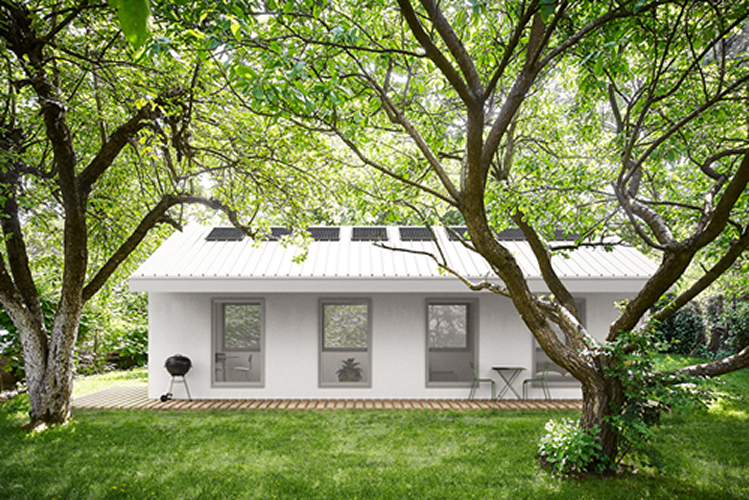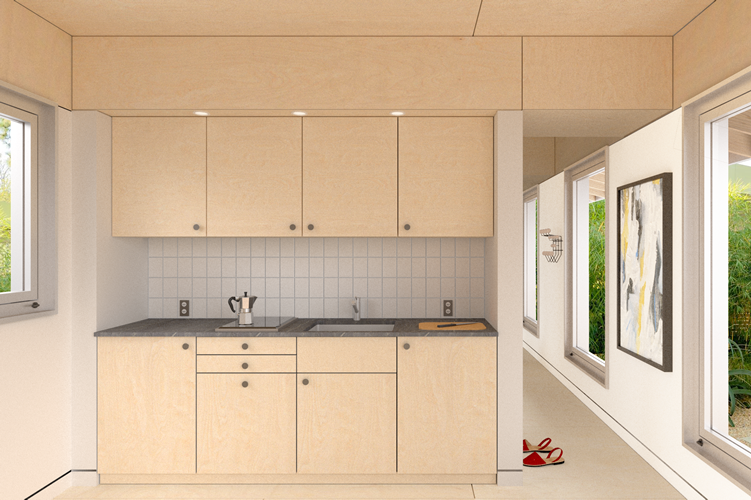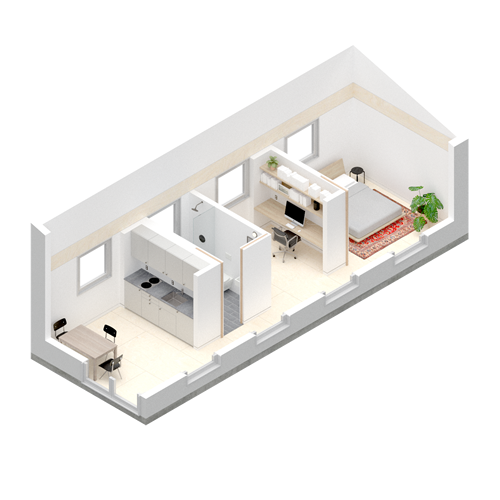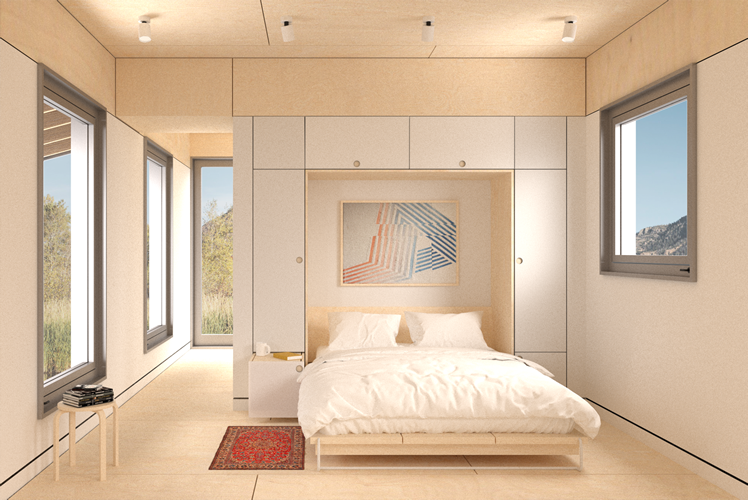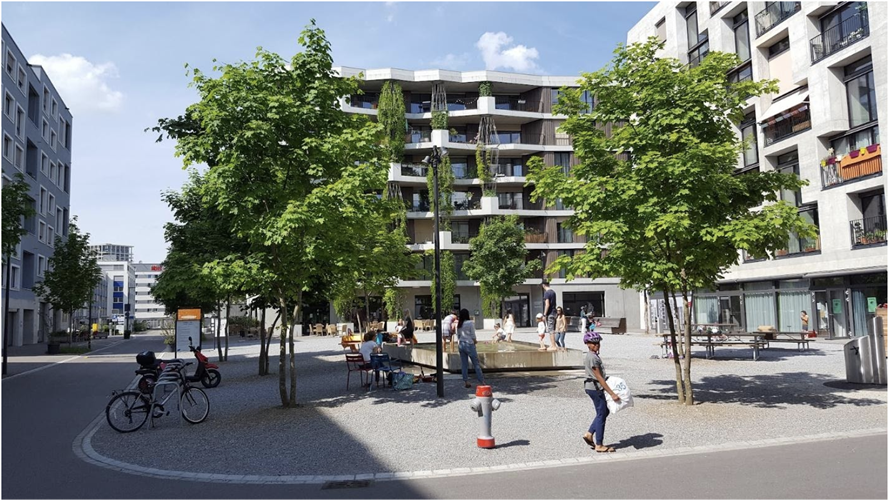Introduction: Elli Mosayebi
The vacancy/no vacancy Project. A performative house of the future.
(Edited and translated from https://mosayebi.arch.ethz.ch/forschung/)
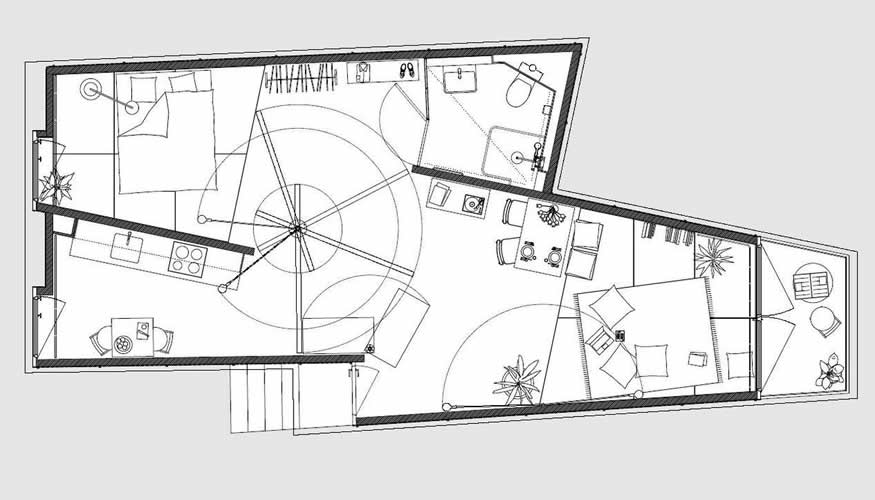 |
vacancy – no vacancy project. "Floor Plan."
|
Background
The mock-up is based on a project by Moyreal Immobilien AG at Stampfenbachstrasse 131 in Zurich, designed by Edelaar Mosayebi Inderbitzin Architects. With the mock-up, the spatial and constructive-technical interplay of the components is prototypically tested in everyday life. The mock-up is a contribution to research in practice.
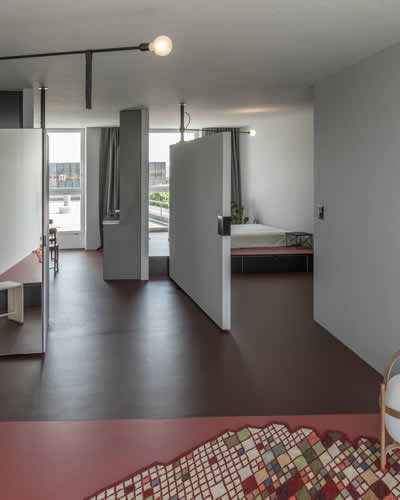 |
vacancy - no vacancy project. "Sleep on riposa."
|
Starting position: Small apartments
One third of the apartments in the city and in the canton of Zurich are occupied by single households, another third of the households are made up of couples and only one third are families and other joint households…The majority of single households are inhabited by women and men between the ages of 30 and 60. This group of single people is very mixed: students, multi-local residents, younger singles, widowed and divorced people are equally part of it. The increase in individual households is accompanied by the individualization of life plans, which has been progressing since the 1960s thanks to increasing prosperity and a marked rise in the level of education. This realization calls for small apartments that are as flexible as possible and the possibility of individual appropriation.
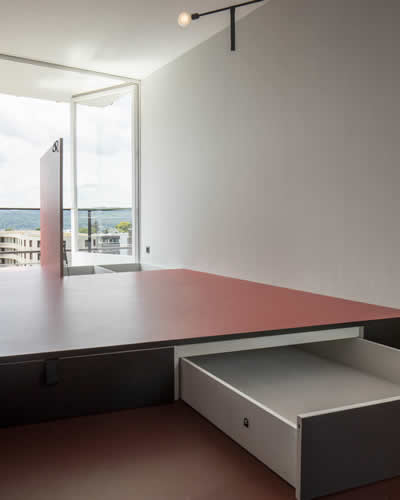 |
vacancy – no vacancy project. "The two built-in platforms contain numerous storage compartments for personal belongings."
|
Design of a new form of living
The idea for such a living is based on the idea of ??a “performative space” that adapts individually to the resident: Like a dress, it wraps itself around the resident, can be opened and closed, and offers various niches and storage spaces for light household items. In terms of this performance, the basic elements of architecture are rethought: floor and ceiling, doors and walls, fixtures and furniture, windows, structural elements, curtains, mirrors, etc. In addition to the movable elements, two pedestals on the facade are particularly important. They follow the idea of ??living with little furniture. Here the floor becomes a seating and lying area. Edelaar Mosayebi Inderbitzin Architekten is engaged in research into new, unconventional forms of living in practice and teaching.
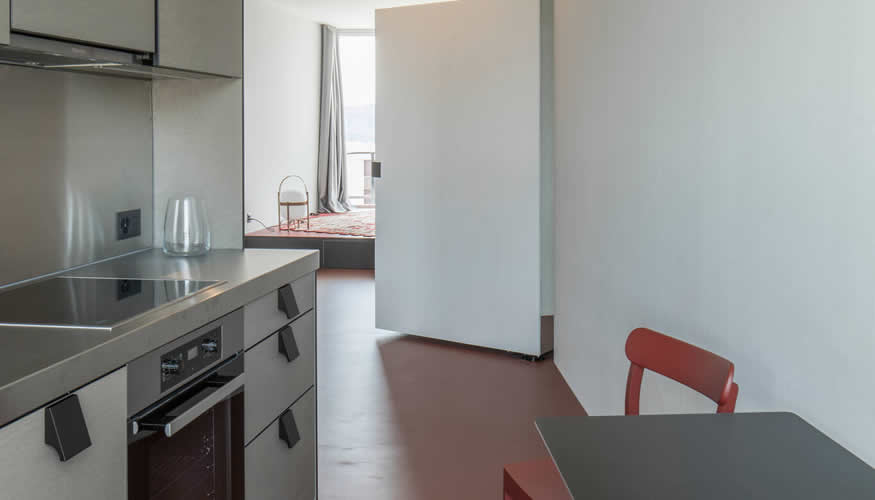 |
vacancy - no vacancy project. "The Kitchen"
|
Research topics
1. Constructive feasibility: Movable components such as sliding walls, folding walls or revolving doors are not often installed in architecture because they involve a higher construction effort and the components are prone to malfunctions. The mock-up is used to develop such movable elements as prototypes and to refine them constructively. The focus here is on the revolving door and the rotating cabinet. Finally, the mock-up is used to carry out sound measurements, as there are no corresponding values ??for the selected construction with solid wood panels left visible.
2. Behavioral study in living: Another difficulty with changeable rooms lies in the sluggish behavior of the residents, which does not support constant changes. According to the behavioral researcher BJ Fogg, new behavior is only accepted when the change is easy to implement (ability), it evokes positive emotions (motivation) and is prompted. The behavioral studies with test residents aim to understand the residents' willingness to change. For this purpose, different social groups will each live in the mock-up for a week. Rotation angle sensors in the moving components will measure the frequency of movement and the selected angles. After their stay, the test persons are asked about the quality of living by means of a questionnaire. This part of the research is carried out in cooperation with the ETH Wohnforum, led by Dr. Marie Antoinette Glaser.
See also: https://translate.google.com/translate?hl=en&sl=de&u=https://performatives-haus.ch/&prev=search&pto=aue
|
|
|
 Elli Mosayebi, Edelaar Mosayebi Inderbitzin Architects (BP2022 Juror): vacancy – no vacancy project. "The two built-in platforms contain numerous storage compartments for personal belongings." (See Essay Question: Introductions by jurors.)
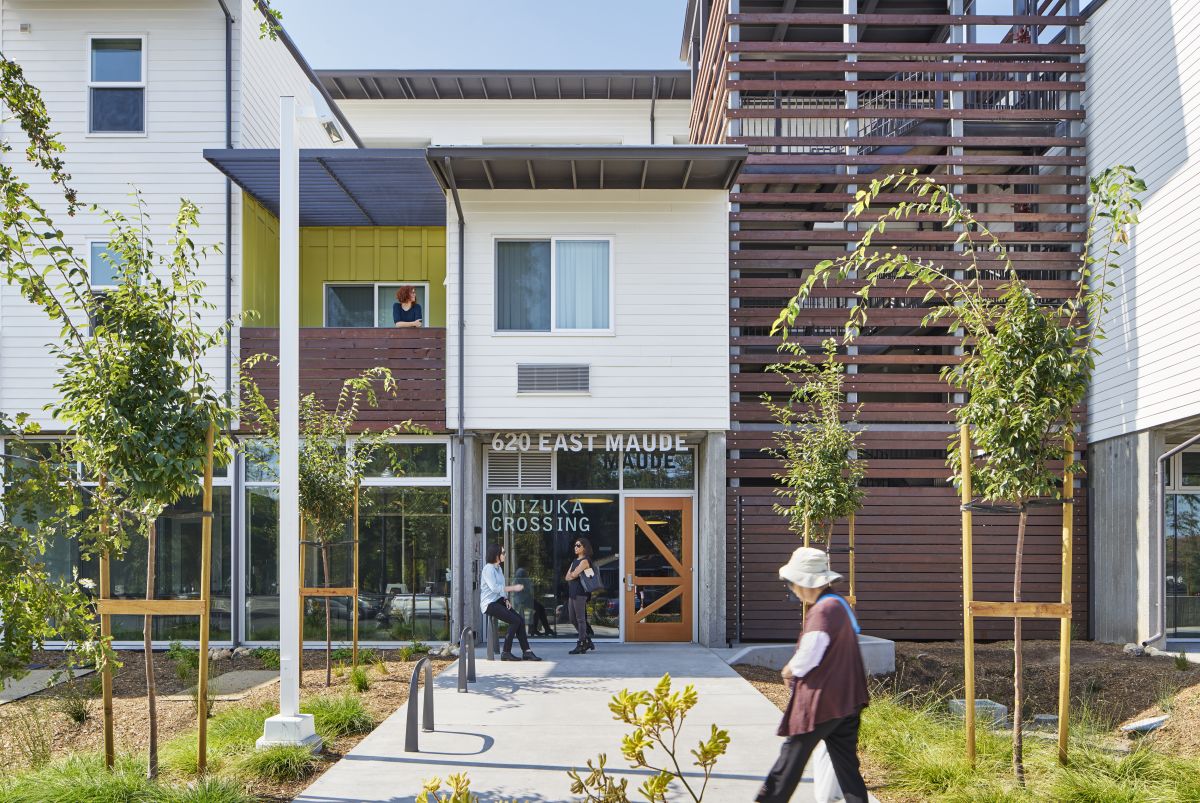 Onizuka Crossing Housing, David Baker Architects, San Francisco, 2016. The result of a partnership between MidPen Housing and the City of Sunnyvale, California, U.S.A., Onizuka Crossing provides 58 low-income working families with new, affordable rental homes in Sunnyvale, the heart of the Silicon Valley. Twenty-nine units are reserved for formerly homeless individuals and their families. (See: https://www.dbarchitect.com/project_detail/178/Onizuka%20Crossing%20Family%20Housing.html) Photo credit: ©Bruce Damonte.from DBArchitect.com.
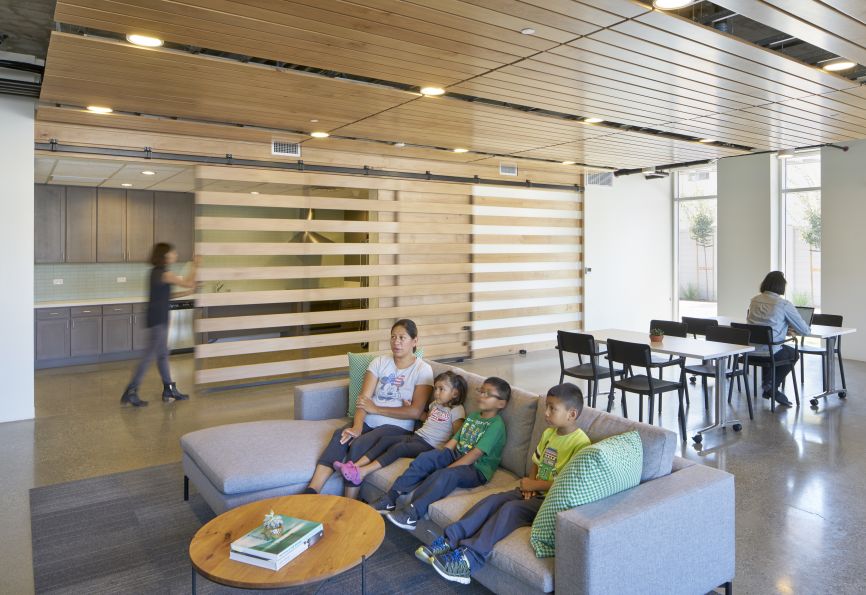 Onizuka Crossing Housing, David Baker Architects, 2016. "Former homeless residents receive extensive supportive services in collaboration with the Santa Clara County Department of Behavioral Health and the U.S. Veterans Administration Palo Alto Healthcare System... Onizuka Crossing is a prime example of infill development, transforming a U.S. National Guard armory building into supportive, permanent affordable housing." (See: https://www.dbarchitect.com/project_detail/178/Onizuka%20Crossing%20Family%20Housing.html) Photo credit: ©Bruce Damonte from DBArchitect.com.
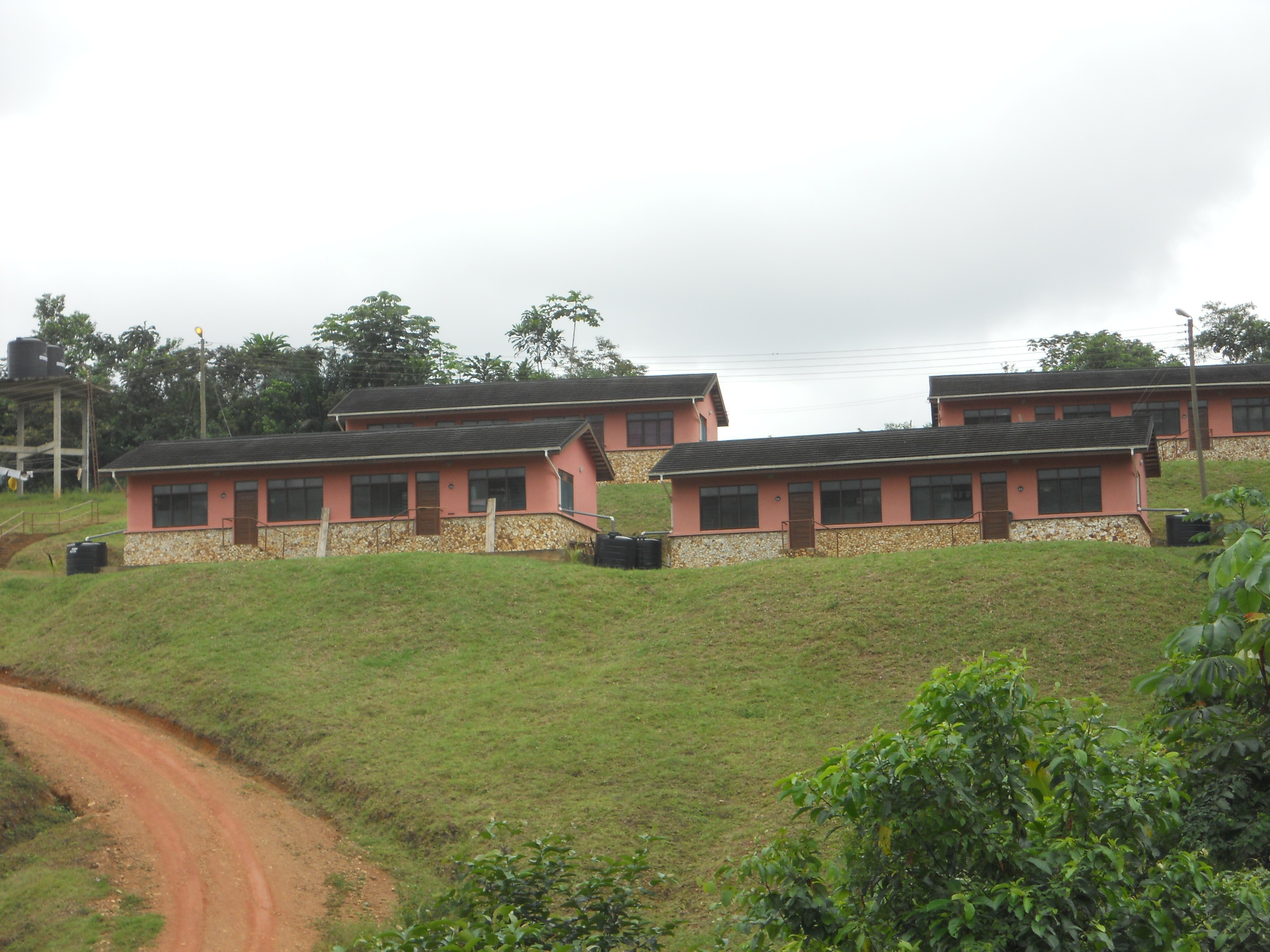 S. Tetteh + Associates Architects, Accra, Ghana. Low-cost housing project for rangers and conservation staff at the Bia and Ankasa Reserves, Juabeso-Bia district, southwest Ghana.
 S. Tetteh + Associates Architects, Accra, Ghana. Low-cost housing project for rangers and conservation staff at the Bia and Ankasa Reserves, Juabeso-Bia district, southwest Ghana.  Fondazione Housing Sociale, Milan, Italy: The Housing Foundation developed a class to help future residents form a collaborative community in their housing development. Research by Dorit Fromm, Writer, Architect, BP2022 Juror: (See Essay Question: Introductions by jurors.)
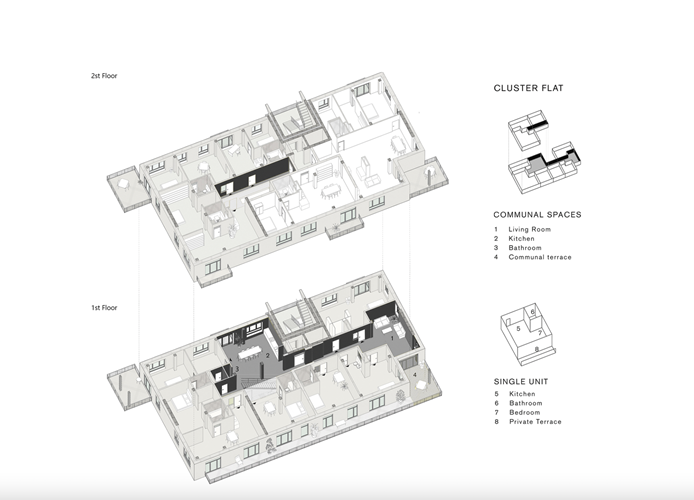 From the manual "Starting Up Communities, A Design Kit for Collaborative Housing," Fondazione Housing Sociale, Milan, Italy. Research by Dorit Fromm, Author, Architect, BP2022 Juror: (See Essay Question: Introductions by jurors.)
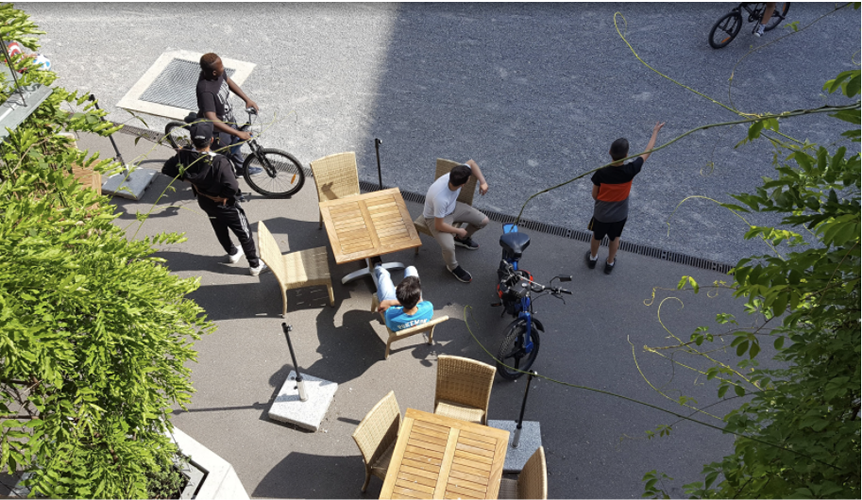 Mehr als Wohnen, Switzerland: Childcare and afterschool care are located on the ground floor level of the housing, as well as a café and other neighborhood services. Research by Dorit Fromm, Author, Architect, BP2022 Juror: (See Essay Question: Introductions by jurors.)
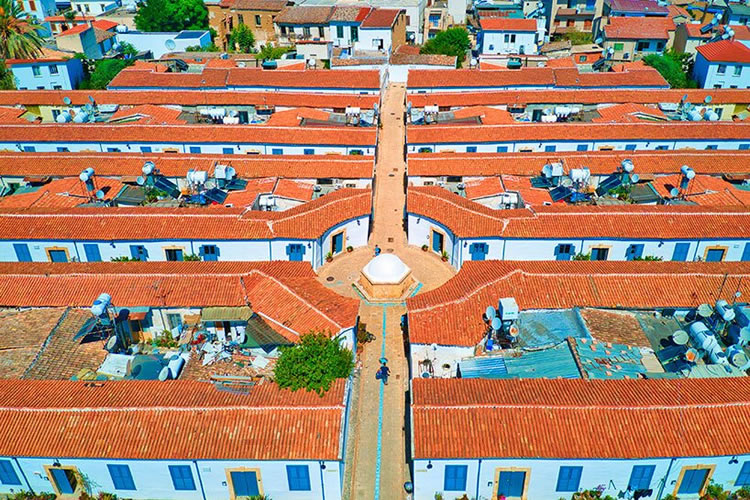 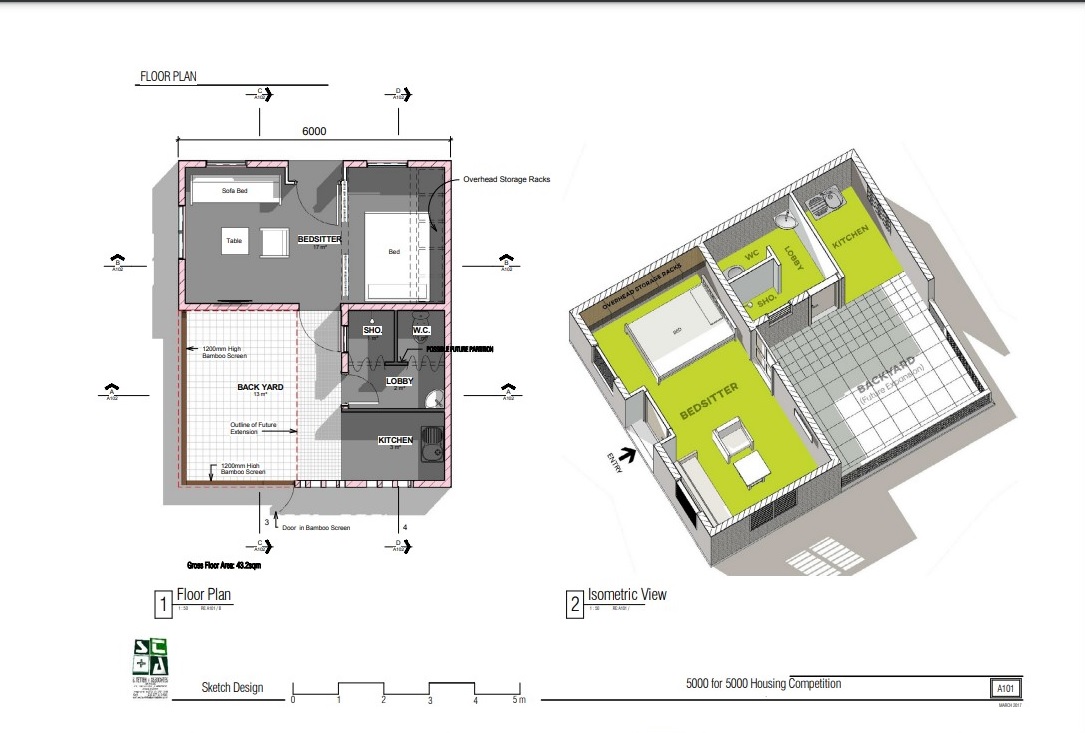 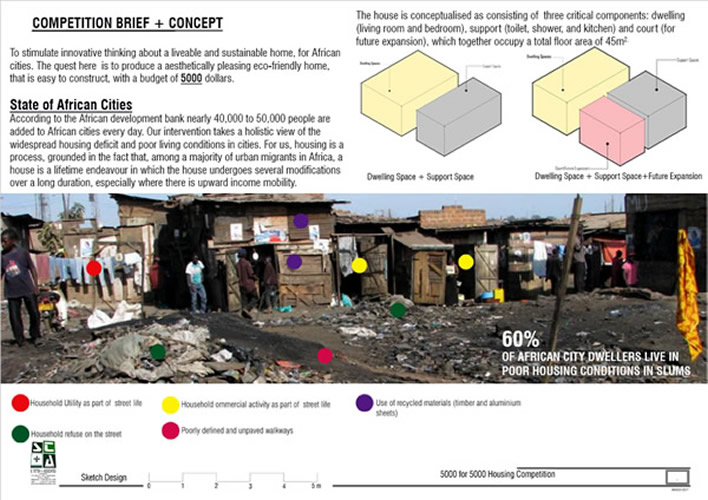 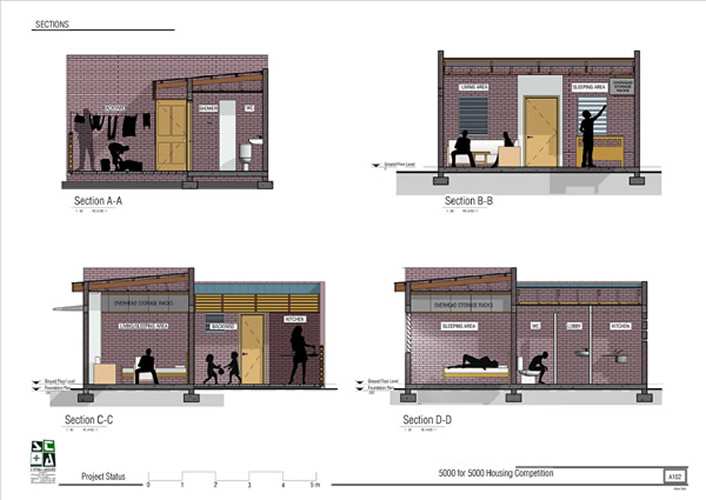 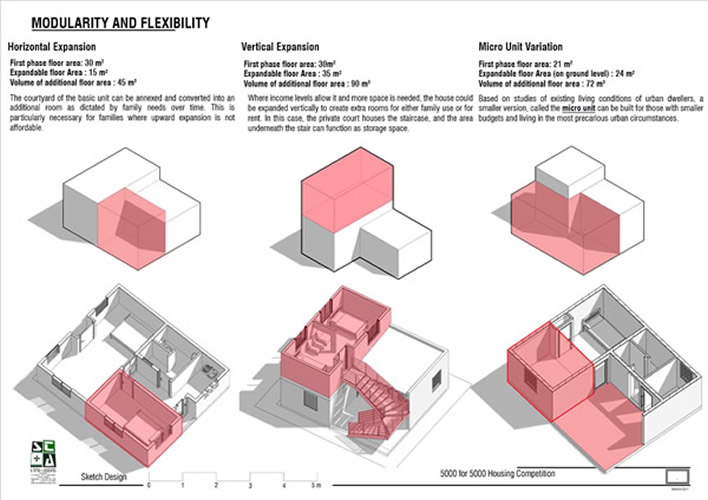 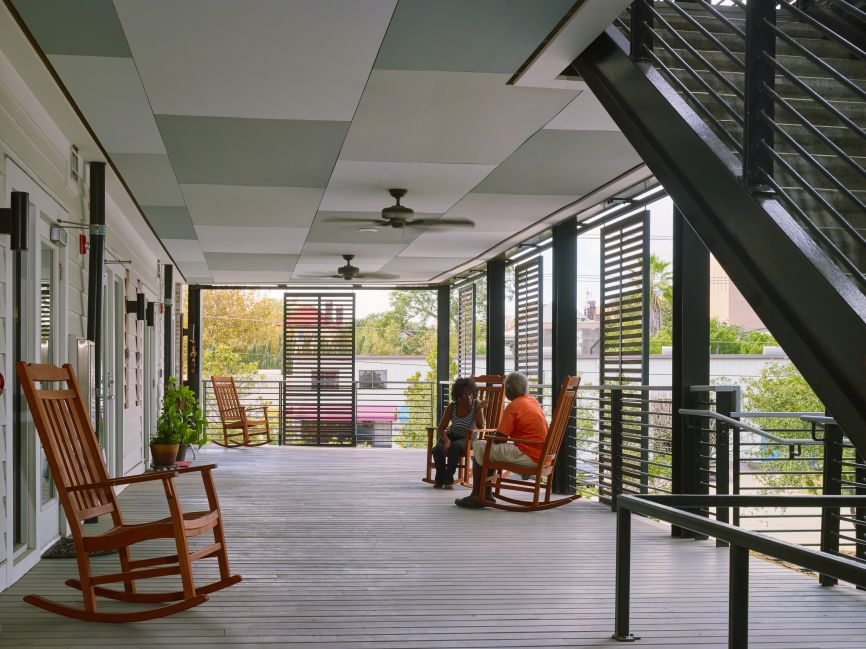 Williams Terrace, Charleston, South Carolina, U.S.A., Architect of Record, McMillan Pazdan Smith Architecture, Spartanburg, South Carolina, U.S.A. /Design Architect, David Baker Architect, San Francisco, California, U.S.A., 2017. "Williams Terrace won the 2019 American Institute of Architects/Housing and Urban Development Secretary's Housing and Community Design Award for Excellence in Affordable Housing Design. This singular nation-wide award recognizes architecture that demonstrates overall excellence in terms of design in response to both the needs and constraints of affordable housing... Wide porches that double as circulation offer places to sit, meet in passing, and personalize a bit of outdoor space." (See: https://www.dbarchitect.com/project_detail/176/Williams%20Terrace%20.html) Photo credit: Chris Luker from DBArchitect.com.
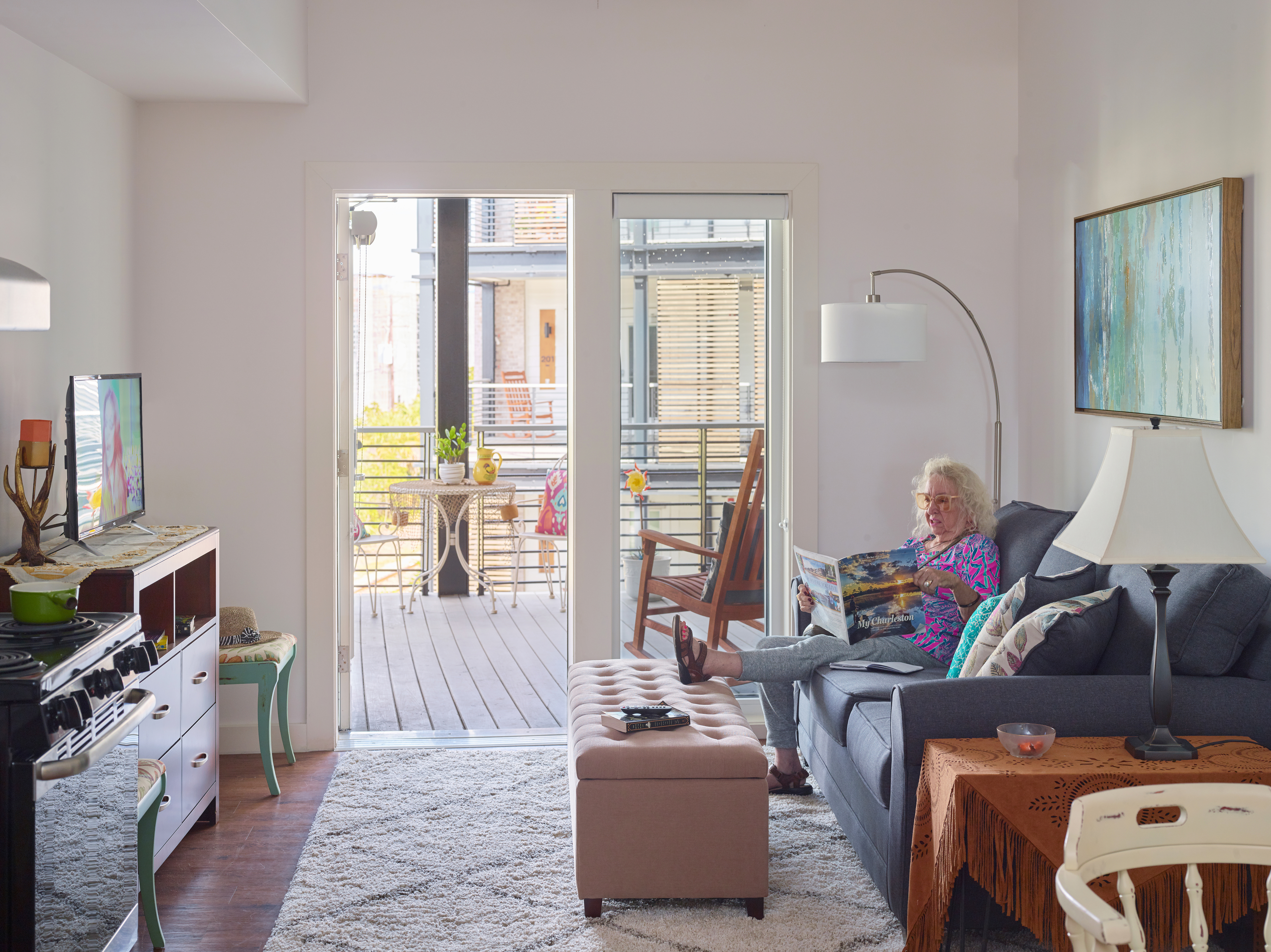 Williams Terrace, Charleston, South Carolina, U.S.A., Architect of Record, McMillan Pazdan Smith Architecture, Spartanburg, South Carolina, U.S.A. /Design Architect, David Baker Architect, San Francisco, California, U.S.A., 2017. "The design team worked closely with the Housing Authority of the City of Charleston to create a dynamic building that meets the challenges of the site—located in a high-velocity flood zone—and respects the gracious built fabric of downtown historic Charleston... Apartments connect to the wide circulation porches, which have room for some personal touches." (See: https://www.dbarchitect.com/project_detail/176/Williams%20Terrace%20.html) Photo credit: Chris Luker from DBArchitect.com.
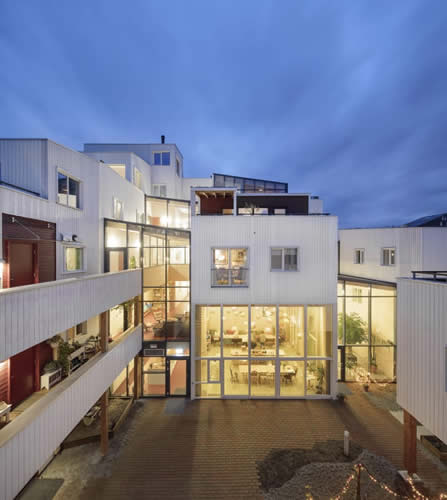 Vindmøllebakken, 40-unit cohousing project, Stavanger, Norway, 2019. Designed by founding architects Siv Helene Stangeland and Reinhard Kropf of Norwegian firm Helen & Hard. The architects now live in Vindmøllebakken. Photo credit: Minna Soujoki Langbord/Courtesy of Helen & Hard via Editon.CNN.com
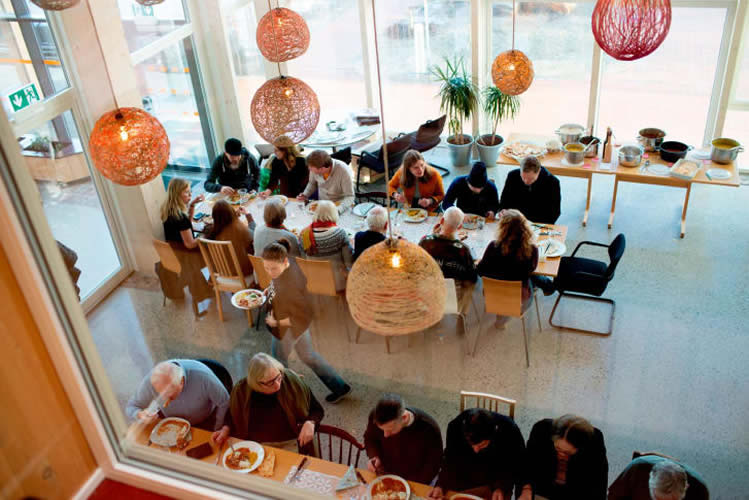 Vindmøllebakken, 40-unit cohousing project, Stavanger, Norway, 2019. In addition to Vindmøllebakken (see previous slide), Helen & Hard are reported to having five other cohousing projects in the works. Photo credit: Sindre Ellingsen/Courtesy of Helen & Hard via Edition.CNN.com
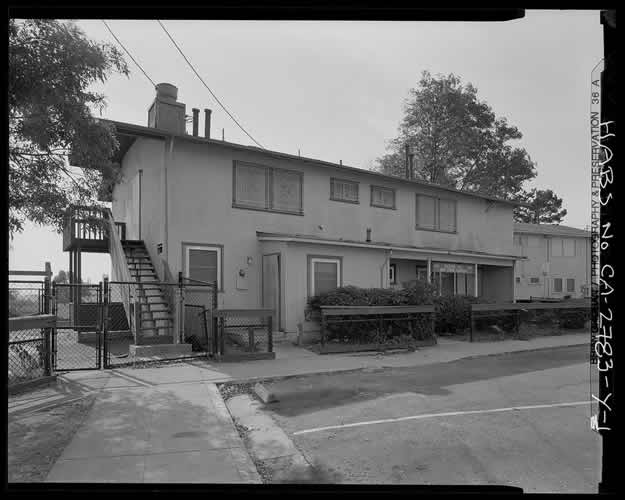 Easter Hill Village, Richmond, U.S.A., 1954. Demolished, 2004. "It was the most significant public effort to provide affordable permanent housing for many families displaced by demolition of temporary World War II housing. It was the first multi-unit residential development to combine the twin themes of the planned unit development with the individuation of units... and the care given to integrating a multi-unit residential development to its site." Historic American Buildings Survey, Library of Congress, U.S.A. (See: https://www.loc.gov/item/ca3350/)
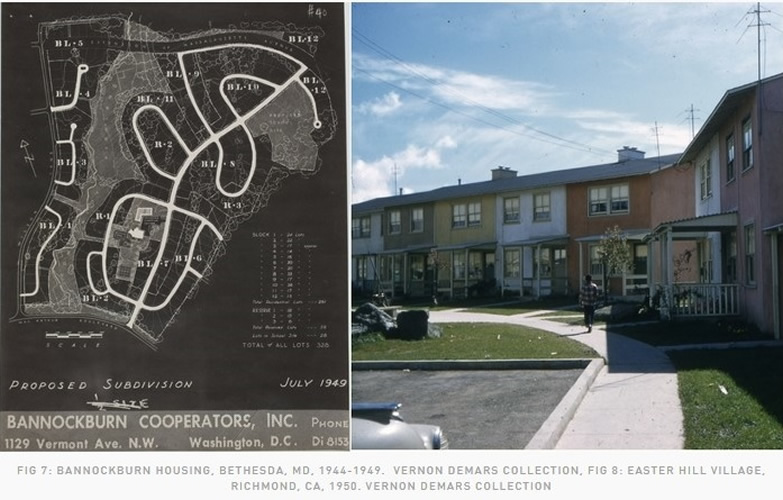 Richmond Village (formerly Easter Hill Village - see previous slide), California, U.S.A., 2008. "The goal for the …Richmond Village project was to turn 300 units of crime-ridden, run-down public housing into a vital neighborhood anchored by a community center and public open space. The development was originally built in 1954 and was a model of public housing until neglect, crime and poverty took over. The Richmond Housing Authority together with Richmond Village…residents collaborated to re-construct a vision of community. The vision included open/community space with mixed-income housing; 100% of the rental housing is affordable, with 70% allocated for public housing residents. The for-sale family homes have a mix of low, moderate and market-rate housing." (See: https://www.nibbi.com/projects/richmond-village/)
|
|







